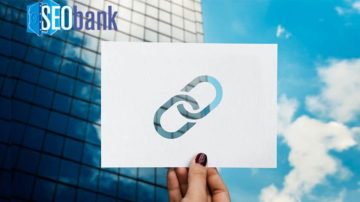Selecting the products in your catalog or making your products require surprisingly similar thought processes to achieve great results. Both consumer packaged goods companies and custom packaged goods companies have flourished, even while the business of retailing the items in brick and mortar stores have become less valuable. I remember loving to go to Toys ‘R Us as a kid, and now they’re barely keeping above water.
What happened is a very complicated situation. However, there were significant storylines woven into that situation. As a kid a trip to Toys ‘R Us was awesome, you got to try out new toys and hopefully walk out of the store with a present even though I rarely deserved one as a kid. That experience seemed to have changed, it’s tough when adults like me make broad assumptions about an experience for another, and in this case younger, generation.
The Big Box store. These retail behemoths became warehouses for the local population. Home Depot is the only one that “should” look like a warehouse, but recent trips to Toys ‘R Us were simply a Home Depot experience. The products are no longer front, and center, many current big box retailers, do not consider customer experiences. As an aside, DJI has awesome retail stores, so does Nespresso, they’re both nailing it, more on that later.
Want to start a business with only $100? You can. Want to purchase $10 million in inventory? You can. Want to build the next _______? You can. The retail and the manufacturing side has never been more accessible. Even 15 years ago it was a ton of capital to get a brand up and running. I built Dawg Grillz, a brand with a $150,000 valuation in the first year with only $20,000. That’s a 650% increase in one year. My business Creatibly has seen a 351% increase in the past five years and as of January-July has increased 100% over 2017.
Shorten your failure cycle until your successes rub against each other.
As a brand builder that’s my job, to build a brand and help it grow. Not every attempt is a success, but the failures are shortening their cycles in between successes. That should be a goal of every business, to not overly worry about failures but to shorten the failure cycle. It’s much the same with anything in life; if you’re trying to lose weight reduce or shorten the mistakes you make, maybe the donut should be singular, not plural. If you want to run faster, gradually reduce the time between cycles of not running. It’s an oversimplification here, but I promise to give up the details. Context is important.
Don’t sell crap to people.
This one should be dead obvious but it’s still not, and it blows my mind. Consumers are more than ever able to distinguish between a great product that satisfies or exceeds their expectations or it sucks, and Yelp hears about it, and Google Reviews hears about it, and they blog about it. If you try to dupe people they’ll come back, not in the way you want them too, your brand will take a hit.
When you receive a product sample or are designing your own, put yourself in the shoes of how the consumer feels. Is it up to your expectations? If you received this as a gift would you be happy or just “meh…” If you’re marginally on the fence with the “meh…,” it’s time to re-evaluate it. Your product may need Version 1.1 or 3.1 before it’s ready.
Keep refining and putting in the work so that if you received your product, you would be happy.
Death by committee is common; it goes something like this: You’re happy with your brand, your product, your service or any combination and you decide that it would be a great idea if 15 of your family members reviewed what you’ve done. They’ll most likely dislike what you’ve done or given you a laundry list of errors, you’ll never keep up, and you’ll most likely become disheartened. I’ve been in the consumer packaged goods industry for 15 years, I have seen amazing products hit the trash can because someone lost hope in it, they lost hope when it was ready, when it could have been sold, when it could have made someone happy, could’ve changed the world.
Ego is always tough to leave out of your product, and even a brand you represent whether through manufacturing, distribution, wholesaling or retailing. It’s essential to take the helm of your brand and be its ambassador. Too few people stand up for themselves and their brands that they end up feeling like they’re not worthy of them and lock the doors.
Taking responsibility and being an ambassador for your brand is endlessly relevant.
When you decide on your brand’s design or the product you represent it’s important to represent that brand to the best of your abilities. Whether it’s merely responding to e-mails promptly, responding to positive and negative feedback quickly, to representing your brand even by the way you act. You will eventually embody your brand, and it’s essential to put the best, unique version of yourself out there to represent it. One of my Chinese employees said to me once “If you’re one in a million in China, there are ten thousand just like you.” At first, it was offensive at face value, but when I asked him more, he said that even if you are incredibly unique, there are thousands who can relate.
You are going to become your brand; you may as well love what it stands for.
If being straight-laced, suit and tie wearing, shoes polished kind of business person there is a vast market. If you’ve died your hair purple and wear a mask, there is a vast market for you too. With how connected we’ve all become it’s easy to see how unique our market has become. Forty years ago, you could choose between laundry detergent one, or number two. Now I can get laundry detergent that meets my specific niche. I made a valuable, original, unique business from a ball for dogs; you know how many balls there are for dogs? Usually, less than two if you’re a responsible pet owner 😉
“If you don’t know where you’re going, any road’ll take you there.” – George Harrison
You may ask “what does this have to do with me picking a product?” Well, it’s simple, you don’t have to follow a trend, try to predict a market, try to guess what kids will be into three summers from now. Think small in community, think you, think about what you would do, or what you would want to buy and there is a market for it. You’re not alone; you don’t need to appeal to the masses to be successful.
When I speak of success, I speak of day to day, sustainable success. You’re hopefully going to see your brand grow every day, and evolve constantly; you’re going to be responsible for its achievements and its failures.
Think about the logistics of your brand.
I have an old house, come to think of it. I’ve always lived in old buildings. With radiator heating and window air conditioners peppered around the windows. Do you know how hard it is to find a window air conditioner that looks nice? It’s friggin’ impossible I tell you, the ones I have are by a top brand and work great, but they completely suck from human interaction and visual appeal standpoint. They’re noisy, but air conditioners have to be, you know, mechanics and what-not.
Here’s why all window air conditioners look like shit, logistics. They’re heavy, so they need a monster of a box to carry them, that box has to absorb test drops as well. Logistics come into play with how cubic meters are shipped, by the cubic meter. Typically weight doesn’t have a ton (pun intended) to do with it when shipping large quantities, sure if you’re shipping a cubic meter of lead, it will generally be different than feathers, but when it comes to products people use it’s usually not that vast a difference. So the air conditioner manufacturer has to design something efficient and powerful in a small space, so design and interaction move way down the list of items.
This lack of design and human interaction considerations has affected the price; each time I’m in a big box retailer or shopping on-line air conditioners are in a race for the bottom. If all of the products in a category are generally terrible, then the price is the only concern. This is how your product becomes a race for the bottom on pricing. These manufacturers have decided that $300 for an air conditioner is expensive, and they mark the price down to compete because the products are the same. Then consumers walk out of the same Best Buy store with a $1000 phone. I hope this is coming clear if you leave out original, unique answers to product questions you only have a price to differentiate yourself. If you build something, or partner with someone selling something unique and can connect with your audience, you will have a great business on your hands.
Being unique will allow you to avoid the race to the bottom on pricing.
Connecting your product to its market is the priority for any product, and doing so has never been easier. Depending on your budget you may have to order smaller quantities, maybe one at a time, if this is the case then there are numerous manufacturers in various categories, think custom anything. The most significant feature of this new custom economy is that custom products are incredibly popular.
One of the industries that rooted itself in the custom consumer packaged goods market is also one of the largest, the cycling industry. As a consumer, you have been able to build a custom bicycle for the past decade. Never has a bike been more expensive, the industry has seen a nearly exponential increase in product cost, it’s easy to by a bicycle for well over $15,000, and it’s common to virtually any brand. There is a market for a $15,000 bike, a huge one in fact. I used to race years ago even up to the National Level, and it was incredibly fun, I used to race on an $10,000 bike, and also at my level I didn’t need it, it was too much bike, the only reason people bought these was that they were the best of the best for that time.
Having a unique, customized, and high-quality product offering will put your product in a category where the customers will be more demanding of quality but also less responsive to pricing considerations.
Here are some tips on picking or creating your product or brand:
- “Shorten your failure cycle until your successes rub against each other.
- “Don’t buy, or sell crap to people.”
- “Keep refining and putting in the work so that if you received your product, you would be happy.”
- “Taking responsibility and being an ambassador for your brand is endlessly important.”
- “You are going to become your brand; you may as well love what it stands for.”
- “If you don’t know where you’re going, any road’ll take there.” – George Harrison”
- “Think about the logistics of your brand.”
- “Being unique will allow you to avoid the race to the bottom on pricing.”
About the author:
Scott Luscombe's early adoption of digital media has allowed him to bridge the gaps between graphic design, illustration, copywriting, and motion graphics. Deploying each medium to tell stories that sell brands has been his main focus.
His career began as a Junior Designer at Citrus Media to Creative Director at Magnetic over five years during his early graphic design and web design career. In a short amount of time, Scott Luscombe went from managing small projects to managing a multi-talented team of up to fifty graphic designers and web developers by building cross-functional relationships in fast-paced environments.




